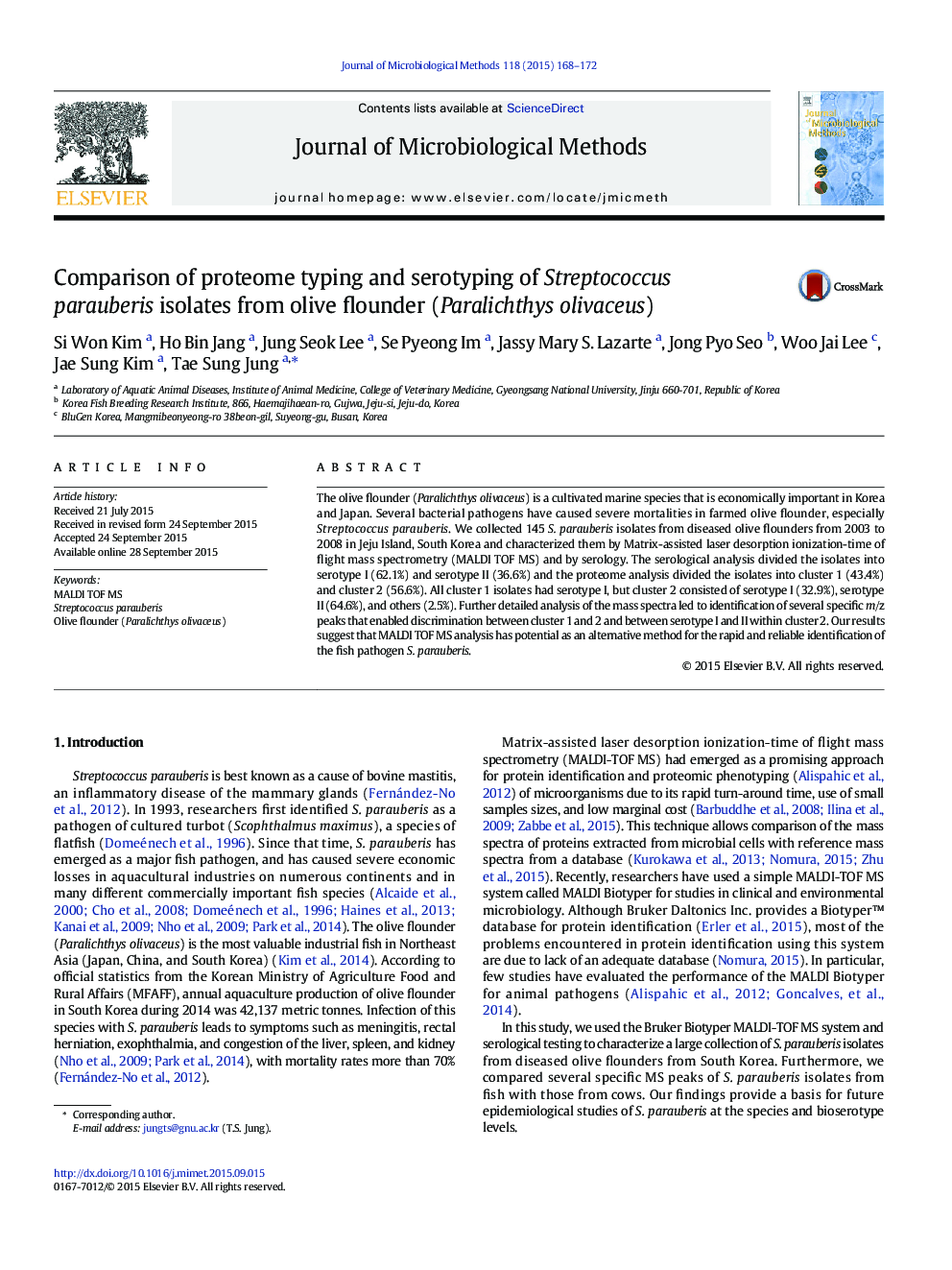| Article ID | Journal | Published Year | Pages | File Type |
|---|---|---|---|---|
| 2089773 | Journal of Microbiological Methods | 2015 | 5 Pages |
•S. parauberis pathogenic to olive flounder was divided into two serotypes.•MALDI TOF MS was applied to identify S. parauberis from spleens of olive flounder.•Expansion of database with additional strains improved accuracy of identification.•Specific peaks classified the serotype I and serotype II within cluster 2.•Several specific m/z peaks can differentiate S. parauberis from fish and cows.
The olive flounder (Paralichthys olivaceus) is a cultivated marine species that is economically important in Korea and Japan. Several bacterial pathogens have caused severe mortalities in farmed olive flounder, especially Streptococcus parauberis. We collected 145 S. parauberis isolates from diseased olive flounders from 2003 to 2008 in Jeju Island, South Korea and characterized them by Matrix-assisted laser desorption ionization-time of flight mass spectrometry (MALDI TOF MS) and by serology. The serological analysis divided the isolates into serotype I (62.1%) and serotype II (36.6%) and the proteome analysis divided the isolates into cluster 1 (43.4%) and cluster 2 (56.6%). All cluster 1 isolates had serotype I, but cluster 2 consisted of serotype I (32.9%), serotype II (64.6%), and others (2.5%). Further detailed analysis of the mass spectra led to identification of several specific m/z peaks that enabled discrimination between cluster 1 and 2 and between serotype I and II within cluster 2. Our results suggest that MALDI TOF MS analysis has potential as an alternative method for the rapid and reliable identification of the fish pathogen S. parauberis.
